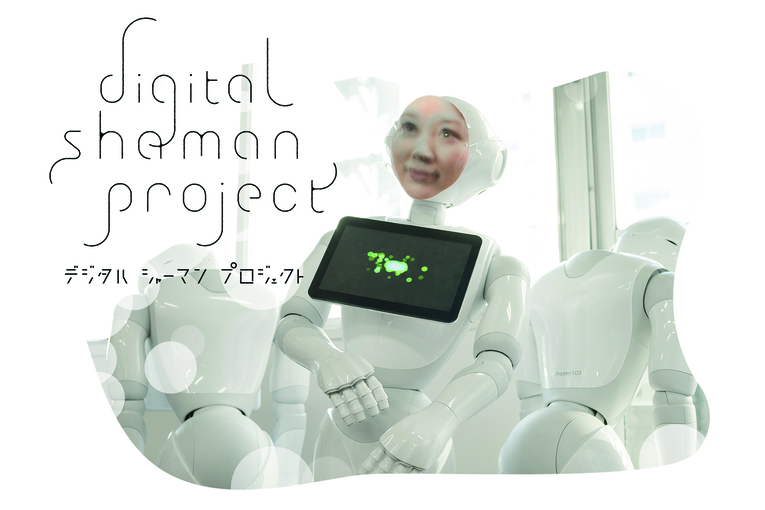20th Entertainment Division Excellence Award
Digital Shaman Project
Robot application
ICHIHARA Etsuko [Japan]
Outline
This work proposes a new mode of mourning in keeping with the technical advances of today. A 3D-printed mask of the deceased’s face is placed on a domestic robot installed with a motion program that mimics the physical characteristics—personality, speech, gestures—of that individual as if possessed by their spirit. The program functions for 49 days after the person’s death (the traditional Buddhist period of mourning in Japan), during which time family members can experience simulated conversation with the deceased as if he or she were still alive. On the 49th day, the robot bids farewell to the bereaved and the program shuts down. The program is thus designed to allow the bereaved to spend 49 days with a robot seemingly possessed, like a medium, by the deceased. The creator says that she developed the concept after her grandmother’s death, when she personally experienced the function that a funeral serves as a mourning ritual for those left behind. The experiment is part of a research project on funeral rites as a window into the uniquely Japanese approach to life and death. This is one of a series of works on “digital shamanism” that attempt to blend Japanese folk beliefs with technology.
Reason for Award
This work is not about seeking novelty that exploits the superiority of cutting-edge technology, but about using technology as a means of giving form to a certain theme or concept. In contrast with trendsetting media that stimulate the brain with new pleasure-inducing visuals and may even enslave the body via the sense of sight, ICHIHARA seeks to arouse intrinsic human desires, emotions and sensations through the magical use of digital technology, drawing as close as she can to the physical body as representative of life at its most raw. One might describe this as an attempt to liberate the bodies and minds of human beings from the thrall of the time we call “the present.” This endeavor, which generates a number of “stories” from individual memories and references them to the life-specific function known as death, is to be valued more for this concept than for its degree of perfection as a creative work. It reminds us that however far technology may evolve, human beings are creatures who always crave a “story” to help them deal with reality. (KUDO Takeshi)



